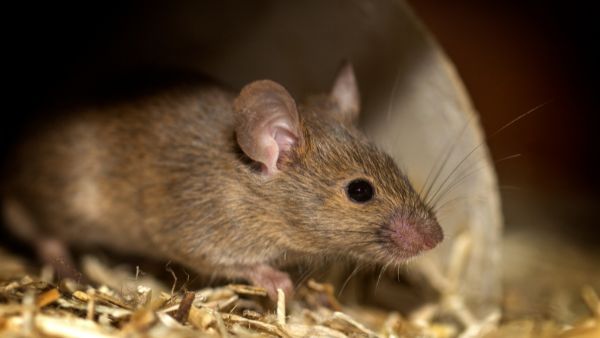Just In
- 8 hrs ago

- 9 hrs ago

- 12 hrs ago

- 12 hrs ago

Don't Miss
- Movies
 Nayanthara's Remuneration Touches New High; Becomes First South Actress To Charge Rs 10 Crore & Here's Why...
Nayanthara's Remuneration Touches New High; Becomes First South Actress To Charge Rs 10 Crore & Here's Why... - Finance
 1:10 Split, Rs 51 Dividend: Accumulate Tata Stock, TP Rs 170; Big Update On £1.25 Bn Investment
1:10 Split, Rs 51 Dividend: Accumulate Tata Stock, TP Rs 170; Big Update On £1.25 Bn Investment - News
 Harvey Weinstein's Conviction Overturned, Netizens Angered Over Elite Privilege
Harvey Weinstein's Conviction Overturned, Netizens Angered Over Elite Privilege - Sports
 T20 World Cup 2024: Waqar Younis Predicts Pakistan's 15-Man Squad; Drops This Express Pacer
T20 World Cup 2024: Waqar Younis Predicts Pakistan's 15-Man Squad; Drops This Express Pacer - Automobiles
 Royal Enfield Unveils Revolutionary Rentals & Tours Service: Check Out All Details Here
Royal Enfield Unveils Revolutionary Rentals & Tours Service: Check Out All Details Here - Technology
 Elon Musk’s X Is Launching a TV App Similar to YouTube for Watching Videos
Elon Musk’s X Is Launching a TV App Similar to YouTube for Watching Videos - Education
 AICTE introduces career portal for 3 million students, offering fully-sponsored trip to Silicon Valley
AICTE introduces career portal for 3 million students, offering fully-sponsored trip to Silicon Valley - Travel
 Escape to Kalimpong, Gangtok, and Darjeeling with IRCTC's Tour Package; Check Itinerary
Escape to Kalimpong, Gangtok, and Darjeeling with IRCTC's Tour Package; Check Itinerary
Rat Fever Reported In Karnataka: Know About The Causes, Symptoms, Treatment And Prevention
Recent news reports show a rise in rat fever cases in Udupi, Karnataka. The rat fever outbreak has caused panic in Udupi amid the COVID and monkeypox concerns. In Udupi, strict vigilance is being maintained regarding rat fever. A total of 85 cases of rat fever have already been reported in the district, and the number of cases is steadily increasing, according to the news outlets [1].
Last week, Tanzania reported a 'mysterious fever' that killed three people, which has now been identified as leptospirosis or rat fever by the East African government [2].
It is a bit misleading to call it rat-bite fever. Rats are only carriers of the bacteria that cause the disease. Rodents such as mice, squirrels, guinea pigs, and gerbils also carry these bacteria.
If dogs or cats have been in close contact with infected rodents or their droppings, they may also carry the bacteria. As hosts, animals carry bacteria. However, in most cases, they do not exhibit any symptoms.

What Is Rat Fever?
Rat-bite fever (RBF), or rat fever, is an infectious disease caused by two different bacteria, namely Spirillum minus, commonly found in Asia and Streptobacillus moniliformis in North America (Streptobacillary RBF) [3].
In most cases, people are infected with these bacteria after contacting rodents that carry the bacteria. Alternatively, a person may become infected by eating food or drinking water that has been contaminated with rodent urine or droppings. The condition is known as Haverhill fever. A failure to treat RBF may result in serious or fatal consequences [4].
What Causes Rat Fever?
Generally, there are two types of RBF. North American streptobacillary RBF is the most common type caused by infection with Streptococcus moniliformis. The other type of RBF is spirillary RBF or sodoku. The disease is caused by S. minus bacteria and is the most common type in Asia.
RBF occurs when one of these bacteria enters the body through an open wound or mucous membranes in the eyes, nose, or mouth.
Bacteria that cause RBF are transmitted to humans by the following [5]:
- The bite or scratch of an infected rodent
- Infected rodent saliva, urine, or faeces
- contact with contaminated surfaces
- The consumption of contaminated foods or beverages

What Are The Symptoms Of Rat Fever?
If RBF is not diagnosed and treated early, it can lead to severe disease and death. Contact with rodents can also cause several other illnesses.
In its early stages, rat fever of RBF may exhibit similar symptoms to other medical conditions. However, Streptobacillary and spirillary RBF (sodoku) often present different symptoms.
Symptoms of streptobacillary RBF include [6]:
- Fever
- Vomiting
- Headache
- Muscle pain
- Joint pain or swelling
- Rash (occurs in about 3 out of 4 people with RBF)
- An intermittent fever
- Swollen lymph nodes
- Rash
- Swelling or sores near the wound
Symptoms of spirillary rat bite fever (sodoku) typically appear 7 to 21 days after exposure to the bacteria. A bite or scratch may appear to have changed over time. The following symptoms may also be present [7]:

Who Is At Risk For Rat Fever?
The most significant risk factor for rat-bite fever is exposure to rats or other rodents. A person cannot contract rat bite fever from another person. Infected animals are the only source of infection.
The following individuals are at the greatest risk of contracting rat bite fever [8]:
- People who keep pet rats or other rodents in their homes.
- Individuals who work in research laboratories or pet stores where rats or other rodents are present.
- People live in an area with a significant population of wild rats or mice.
- Older adults.
- Pregnant women.
- People with weakened immune systems.
- There is a higher risk of rat bite fever among children around rodents. They are still in the process of developing their immune systems. They may be less capable of fighting off the illness.
- Abdominal abscesses (pockets of infected fluid).
- Liver and kidney infections (hepatitis and nephritis).
- Infections involving the lung (pneumonia).
- The infection of the brain and nervous system (meningitis).
- Heart infections (endocarditis, myocarditis, or pericarditis).
- An estimated 1 in 10 death rates is associated with streptobacillary RBF infection.
What Are The Complications Of Rat Fever?

How Is Rat Fever Treated?
Rat bite fever must be detected early and treated promptly. If left untreated, it can result in death.
In most cases, antibiotics are very effective at curing the illness. However, if you are exposed to the virus, you must speak with your doctor as soon as possible to receive prompt treatment [9].
If you have been bitten or scratched by a rodent, clean the wound with soap and water. Inform your doctor that you have been scratched or bitten by a rodent. If you experience any symptoms of rat bite fever, your physician will advise you on when to begin treatment.
You should consult your doctor if you have questions about your rat-bite fever risk.
Prevention Tips For Rat Fever
Reducing your risk of contracting RBF and other rodent diseases is possible by avoiding direct contact with rodents, places with rodent infestations, and other areas where rodents may exist [10].
When handling rats in a pet store, wear protective gear, such as gloves. After handling rodents, avoid touching your mouth and face. You should wash your hands with soap and warm water for at least 20 seconds after handling rodents, their cages, bedding, urine, or droppings.
Wear proper protective laboratory gear, including gloves, when handling rats in a laboratory or animal research setting. After handling rodents, avoid touching your mouth and face. After handling rodents, their cages, bedding, urine, or droppings, wash your hands with soap and warm water for at least 20 seconds.

On A Final Note…
RBF is a serious infection caused by the S. moniliformis and S. minus bacteria. Humans are exposed to these bacteria through rat bites and contaminated food and beverages. In most cases, RBF is accompanied by nonspecific symptoms, such as fever, joint pain, and nausea.
Without treatment, RBF may lead to severe complications such as endocarditis and inflammation of the heart membrane.
-
 healthBangalore Loves Its Bakery Cakes 'n Biscuits: But How Bad Is It? Experts Warn About Obesity!
healthBangalore Loves Its Bakery Cakes 'n Biscuits: But How Bad Is It? Experts Warn About Obesity! -
 wellnessBangalore: Zika Virus Found In Mosquito; Karnataka Health Dept Issues Advisory, Prevention Tips
wellnessBangalore: Zika Virus Found In Mosquito; Karnataka Health Dept Issues Advisory, Prevention Tips -
 pregnancy parentingKarnataka Govt Releases Circular On School Bag Weight: Effects Of Heavy Bags On Children
pregnancy parentingKarnataka Govt Releases Circular On School Bag Weight: Effects Of Heavy Bags On Children -
 festivalsUgadi 2023: The New Year Festival As Celebrated In Karnataka
festivalsUgadi 2023: The New Year Festival As Celebrated In Karnataka -
 faith mysticismHanuman Chalisa, Suprabhata Will Be Played In Temples In Karnataka At 5 AM From May 9: Pramod Muthalik
faith mysticismHanuman Chalisa, Suprabhata Will Be Played In Temples In Karnataka At 5 AM From May 9: Pramod Muthalik -
 decorUgadi 2023: 7 Expert Home Decor Ideas For Celebrating Ugadi Festival
decorUgadi 2023: 7 Expert Home Decor Ideas For Celebrating Ugadi Festival -
 womenIndia: Court Upholds Hijab Ban In Karnataka Educational Institutes
womenIndia: Court Upholds Hijab Ban In Karnataka Educational Institutes -
 healthRemain Cautious For 4-6 Weeks, Follow COVID Guidelines To Control Next Wave: Karnataka Health Minister
healthRemain Cautious For 4-6 Weeks, Follow COVID Guidelines To Control Next Wave: Karnataka Health Minister -
 lifeKannada Rajyotsava 2023: Here's What You Need To Know About This Day
lifeKannada Rajyotsava 2023: Here's What You Need To Know About This Day -
 pulseKarnataka-Based Businessman Performs Housewarming Ceremony With His Late Wife
pulseKarnataka-Based Businessman Performs Housewarming Ceremony With His Late Wife -
 wellnessCOVID-19: Phased Exit Strategy For General Public After The Lockdown
wellnessCOVID-19: Phased Exit Strategy For General Public After The Lockdown -
 womenKarnataka Park Names Royal Bengal Cub 'Hima' To Honour India's Golden Girl
womenKarnataka Park Names Royal Bengal Cub 'Hima' To Honour India's Golden Girl


 Click it and Unblock the Notifications
Click it and Unblock the Notifications



